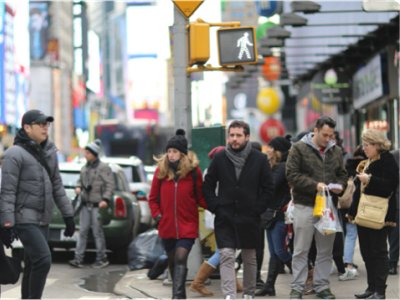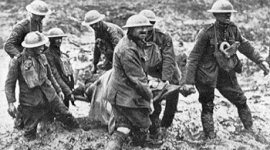
THE THREE SPACES OF SAFETY
You shall love your neighbour as yourself, said Jesus.
In this simple instruction, the ingredient for a good society is given. A series of key relationships can be measured this way: between spouses, within families, between neighbours, among work colleagues, between majorities and minorities, among strangers. It only feels odd to talk about love between these different groups because we have defined love as a romantic or fuzzy feeling towards someone. Love is, in fact, doing the right thing by someone else.
Which brings us to the relationship between two groups of people, equally divided in number and whose relationship is the most prevalent of all: men and women. Here the audit is not as good as it should be. Scripture speaks regularly of the blessing of people being able to ‘dwell in safety’. It is first base for a flourishing community. If you don’t feel safe, anxiety and fear seep in, affecting the way you think and act. And too many women live this way.
I don’t find this an easy thing, talking about the safety of women, because I am not a woman and only experience this anxiety second hand through the women I know. But I want to do this because for too long the safety of women has been left for women to deal with and to lobby over. It is time to re-frame the security of women as an issue for men. But let’s look at the scene to start with.
For years there have been two spaces in which we exist and therefore in which women’s safety is at stake: the public and the private. The two recent terrible and high profile murders of Sarah Everard and Sabina Nessa are evidence of a lack of public safety. They were not the first female victims of murder by a male stranger and they will sadly not be the last, but they enlarged public debate and called for a re-framing of the issue of female safety away from something that women must sort out to one that men must take responsibility for. To criticise women for being out alone after dark or walking in deserted places, for wearing short skirts or low tops is a judgment that protects men, as if they have no agency in the matter. Men who attack women are entirely responsible for doing so. This is where the debate should start and where it should end.
Murder by stranger is, mercifully, a very rare experience, but women in public places, especially in crowded urban areas, face daily harassment and touching. It is often fleeting, but leaves an emotional scar, reinforcing the sense that you are not safe, that you are, in the words of a famous mafia film, ‘touchable’. That your body becomes public property in public places. If you are listening to this and doubting me, I suggest you speak to the young women you know, for they will often tell this story. The sheer number who do suggests these offences are caused by more men than we might imagine.
The second place of existence is private, the life lived when the door closes on your home. And it is here that women are most at risk. Two women in the UK are murdered every week by a man they know. If two people were murdered in terrorist incidents every week, there would be a huge public debate about security and solutions found to stem the problem. But somehow, the murder of anonymous women, away from public gaze, has not registered as it should. It is not simply a lack of public resources to deal with the problem, it is a way of looking at the issue that downplays its importance.
In our work round modern slavery, people are empowered by learning the signs of slavery. The same can be said for domestic abuse. We can be trained to spot abuse in the people we encounter, to hear the echoes of coercive control in conversation. Women who suffer domestic abuse are found everywhere: at work, in the shopping mall, in the café, at church. And they are found in every socio-economic group, from the richest to the poorest, because this is not simply a question of personal wealth, but of male entitlement.
But there is a third space to live in now: the digital world. We are less than twenty years into a vast, unplanned and messy experiment with social media. It imitates the wild west in its lawlessness and one day, we hope, will find greater stability through the acceptance of social norms. But just as Americans continued to bear arms after the establishment of settled communities, with all that means for public safety in the US today, so the early conventions of social media are likely to be cemented into the building of online communities unless we take early action. If we fail to do this, the suffering will be disproportionately experienced by women.
A host of digital platforms are already in play that objectify, demean and intimidate women. Incel culture is infused with the poison of misogyny and lures men into its domain with the hypnotic, reinforcing effect of a cult. The hatred directed at women online is designed to subordinate them to men and to drive them out of the public world into a private sphere where they cannot have wider influence. For this reason, well-known women, usually successful and influential in their careers, are the special focus of attention, with threats of rape, torture and death.
It isn’t easy to estimate the number of men involved in misogynistic online culture, but the Institute for Strategic Dialogue has put the figure at ten thousand men in the UK alone. And they have a disproportionate effect on the well-being of women. We have recently mourned the losses of Afghan women as their world has become restricted again, but we
POPULAR ARTICLES

Obama's Covert Wars
The use of drones is going to change warfare out of all recognition in the next decades.

Through A Glass Starkly
Images of traumatic incidents caught on mobile phone can be put to remarkable effect.

What Are British Values?
Is there a British identity and if so, what has shaped the values and institutions that form it?


